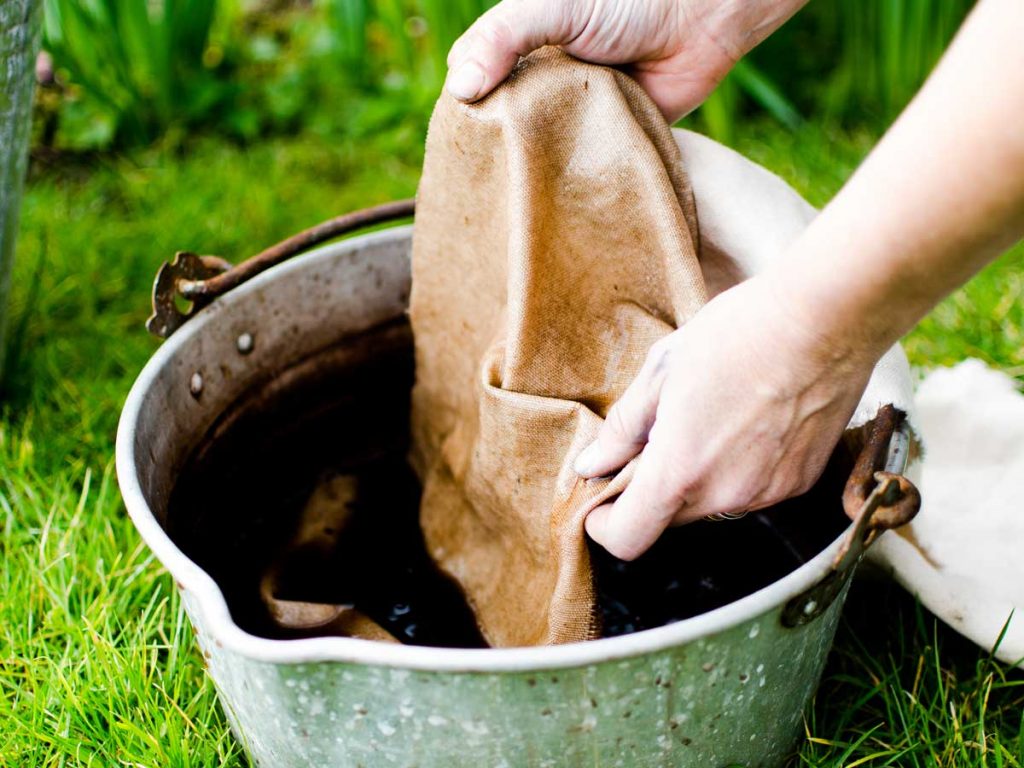Our natural materials

Local, natural materials inspire us – I like what we at Dora Fabrics make, to reflect and be connected to where we live. And using natural plants helps me explore my local fields and hedgerows, become aware of the passing seasons and the changing weather.
This autumn when foraging for walnut husks and leaves to make my warm, glowing brown dye, I discovered many new wild woodland trees as well as unknown plants and herbs I want to experiment with.
Each plant is a product of a passing season, changing weather and local soil – and creates different conditions for dyeing. Seasonal variety and inconsistency have become an essential part of our fabric and one we hope you will love.
When there are no more walnut husks to forage, I turn my attention to tending the rhubarb plants on my allotment. The roots of these give the sweetest pink dye – I wish you could smell it!
And after rhubarb comes weld – my big discovery of last year when I noticed hundreds of plants growing under the Shoreham flyover – weld loves poor soil. When I cut and boiled up the plants, a gorgeous, rich, yellow colour filled my dye pot and the kitchen was filled with a rich and wonderful smell – I was hooked!
In Autumn I returned to collect seeds to sow for next year (weld is a biennial plant) being sure to replenish natural plant stocks and if possible create new natural dye gardens to share.
I do all my dyeing in my kitchen and because I’m using natural dyes, I can be sure they’re perfectly safe if a bit smelly sometimes.
The dye pot can happily bubble away while I cook supper and fill the kitchen with a delicious fug. I love the way I can combine cooking and dyeing – they’re actually very similar and both incredibly satisfying.

